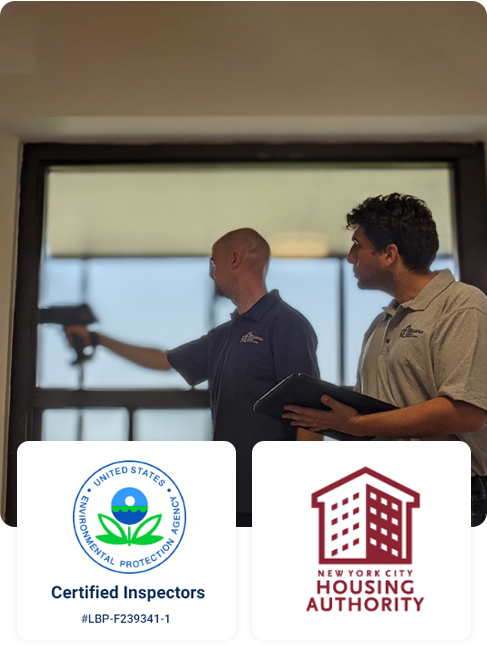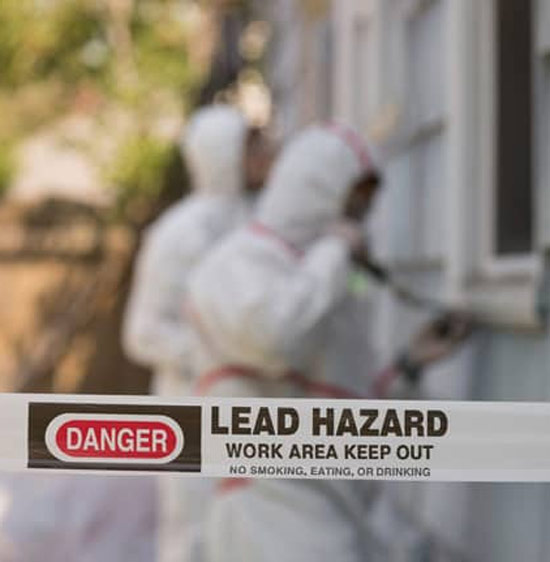Comprehensive Overview on Effective Lead Infraction Elimination Strategies
In the realm of environmental safety, attending to lead infractions requires a thorough and organized approach. This comprehensive guide begins by highlighting the vital preliminary steps of determining lead dangers with innovative analysis and screening techniques. Methods such as XRF evaluation and dust wipe sampling are important in identifying contamination sources. The guide elaborates on the importance of sticking to rigorous security procedures during the elimination procedure, including the use of correct PPE and separating impacted areas. The succeeding areas guarantee to discuss post-removal confirmation and preventative approaches, guaranteeing lasting security and compliance. Discover the intricate information that make these strategies not just effective yet crucial.
Recognizing Lead Risks
Determining lead dangers is an essential first step in reducing the dangers connected with lead direct exposure. Lead, a hazardous steel, can be existing in numerous ecological tools, consisting of paint, dirt, water, and dirt.
The first stage in recognizing lead dangers entails recognizing usual lead resources within the built environment. Structures built before 1978 are particularly susceptible due to the widespread use lead-based paint throughout that duration. Furthermore, soil contamination can occur from deteriorating exterior paint, commercial exhausts, or historic use of leaded gasoline.
Another substantial resource is lead piping and pipes fixtures, which can leach lead right into alcohol consumption water. Durable goods such as toys, porcelains, and imported items may also have unsafe lead degrees. Especially, work-related settings and hobbies including lead can track pollutants into homes.
Analysis and Testing
When dealing with lead hazards, reliable evaluation and testing are paramount. This critical action guarantees the recognition and quantification of lead presence, therefore assisting subsequent removal efforts. First evaluation typically entails a visual examination to determine potential lead resources, such as deteriorating paint or infected dust. This is enhanced by more extensive testing methods to ascertain the level of contamination.

Dust clean tasting is an additional crucial method, specifically in residential settings. By collecting samples from floorings, windowsills, and various other surface areas, this approach provides insights into potential exposure dangers. Moreover, dirt screening around structure borders is vital to discover lead contamination that might present dangers, specifically to youngsters.
Safe Removal Treatments
Upon finishing detailed analysis and screening, carrying out risk-free removal procedures is the following essential stage in attending to lead dangers. This process guarantees that lead-contaminated materials are effectively and securely removed, reducing risk to both employees and homeowners. The primary step involves separating the afflicted location using plastic sheeting and appropriate securing strategies to stop the spread of lead dirt.
Workers must wear proper personal safety devices (PPE), including respirators, handwear covers, and non reusable coveralls, to mitigate direct exposure. Utilizing specialized tools and damp methods, such as damp sanding or using HEPA-filtered vacuum cleaners, decreases the diffusion of lead bits. It is essential to stay clear of dry fining sand or rough blowing up, as these techniques can generate dangerous lead dust.
Garbage disposal is another essential element; all infected materials have to be securely landed and labeled according to EPA and neighborhood policies. In addition, comprehensive cleansing of important link the workspace with HEPA vacuum cleaners and wet cleaning ensures the removal of recurring lead particles.
Post-Removal Verification

Verification of effective lead removal, understood as post-removal confirmation, is important to make certain the safety and habitability of the remediated area. This procedure entails a collection of precise evaluations and examinations designed to spot any type of recurring lead fragments that may position health and wellness threats. The first step generally includes an aesthetic assessment to analyze the completion and quality of the remediation work. This evaluation makes sure that all well-known resources of lead have actually been resolved check that and that no noticeable signs of contamination remain.
Complying with the aesthetic assessment, environmental sampling is conducted. This involves accumulating dirt, dirt, and in some cases water samples from the remediated area. Approved research laboratories assess these examples to determine lead levels, guaranteeing they drop below the safety limits developed by regulative bodies such as the Epa (EPA)
On top of that, air top quality testing may be executed to find airborne lead particles, specifically in situations where comprehensive lead-based paint removal or improvement has actually occurred. The outcomes of these tests provide measurable data confirming that the lead degrees are within acceptable restrictions.
Eventually, post-removal verification offers as an essential checkpoint, validating the efficiency of the lead abatement efforts and safeguarding the wellness of residents and site visitors.
Precautionary Measures and Upkeep

A vital safety net includes making use of lead-safe certified service providers for any improvement, repair work, or paint tasks. These experts are learnt practices that reduce lead dirt and debris. Furthermore, keeping painted visit our website surfaces to stay clear of chipping or peeling is crucial, as deteriorating paint can release lead fragments right into the environment.
Educational efforts targeting property owners and occupants pertaining to the dangers of lead and the significance of reporting any type of possible threats can further improve precautionary initiatives. Regular cleansing making use of HEPA vacuums and wet mopping techniques can substantially minimize lead dirt buildup.
Verdict
In recap, effective lead violation removal necessitates a precise method including complete analysis, specific screening, and rigorous elimination treatments. Making sure safety and security via correct seclusion and personal protective equipment remains critical. Post-removal verification via environmental tasting and air top quality screening corroborates compliance with recognized safety standards. Furthermore, recurring examinations and upkeep are necessary to reduce future lead risks, thereby safeguarding public wellness and making sure sustained compliance with governing demands.